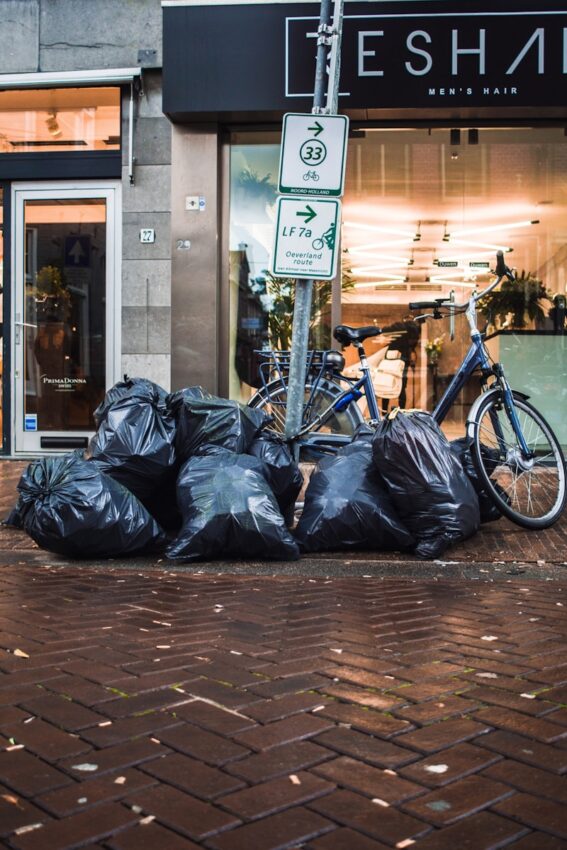Community cleanup events are a fantastic way to unite people, foster a sense of community pride, and make a tangible difference in the environment. Organizing a cleanup day in Durham, North Carolina, not only helps to beautify the area but also promotes sustainability and environmental consciousness.

Whether you’re a seasoned event organizer or planning your first cleanup, this guide will provide practical steps and tips to ensure a successful event. Let’s dive into the process of organizing a community cleanup day in Durham, from initial planning to final execution, and how to make the most of Durham’s sustainable waste solutions.
Planning and Preparation
The first step in organizing a community cleanup day is to develop a clear plan. Begin by selecting a specific date and location. Consider areas that need attention, such as parks, waterways, or littered places in the city. Once you find a proper place to hold the event, you can reach out to the local authorities and organizations to get permission and support. Such parties may include Durham Parks and Recreation Department, neighborhood associations, or environmental groups.
After that, recruit a team of volunteers to help run the affair as smoothly as possible. That could involve a mix of local people, referred inhabitants of the city, and or members of different social organizations. Give specific duties to each team member. Planning team members may cover logistics, promotion, staffing, and supplies management. Clear verbal communication and task delegation are essential in achieving successful event planning.
Gathering Supplies and Support
If your cleanup day is going to be effective, you will need first to have the right tools and resources. Request donations and sponsorships from local businesses and organizations. The necessary tools, such as trash bags, gloves, recycling bins, and a first-aid kit, are critical for the safety and success of your activities. Freshen the volunteers with things to eat and drink, like water and snacks, to help preserve their endurance and focus.
Encourage the admittance of diverse groups of volunteers by using different mediums for the promotion event. Social media platforms, local newspapers, community bulletin boards, and word-of-mouth are some of the methods you can use for advertising. Creating an event page with RSVP options, for example, on Facebook, can help gauge interest and keep volunteers in the loop. Use local mass media to an extent that will create awareness and promote the community cleanup concurrently.
Executing the Cleanup Day
Make sure all volunteers sign in and get a brief orientation right at the beginning of the event. The orientation should include safety guidelines, a complete overview of the cleanup area, and instructions on how to properly sort and dispose of waste. By giving clear information, volunteers can feel reassurance.
Break up the volunteers and allocate certain zones for cleaning purposes. This will avoid any oversight and ensure that every zone is covered. Let them work together and support one another, which can be built with camaraderie and teamwork.
During the cleaning process, it’s good to check in with volunteers now and then to handle any issues that may arise. Make sure the waste collected is properly sorted, with recyclables separated from general waste. Having drop-off sites in certain areas where trash bags should be filled will facilitate this. It will also help to have a pattern and be conducive to a systematic and efficient approach to the cleanup.
Post-Cleanup Activities
Once the clean-up process is completed, correctly dispose of the collected waste. Cooperate with Durham’s waste management services to learn the removal routine and how to properly dispose of trash and recyclables. Correct disposal ensures the maintenance of the cleaning program as an environmentally friendly and sustainable project.
Take some time to appreciate all volunteers and supporters for their work. After social media shout-outs or personalized thank-you cards, hold a post-event gathering to recognize their commitment to the cause. This will enhance the team spirit and, hopefully, encourage them to attend future similar events.
Finally, you can look back on the event’s success and see which areas can be developed and perfected. The next step would be to take feedback from volunteers and team members on what went well and what could have been done better. By combining all the stated results, the cities can plan future cleanups strategically and ensure they are still a big success.
Dozens of black garbage bags on the side of the roads are an occupational hazard worldwide, especially in urban areas. About half of this waste comes from residential waste; improved waste management is a matter we should practice. Several environmental problems arise due to the massive landfills and air pollution caused by the dump. Thirty-seven to 41.3 million metric tons of garbage are annually thrown into the environment by Americans, contributing to the number of environmental issues. So is urban waste pollution through landfills.

